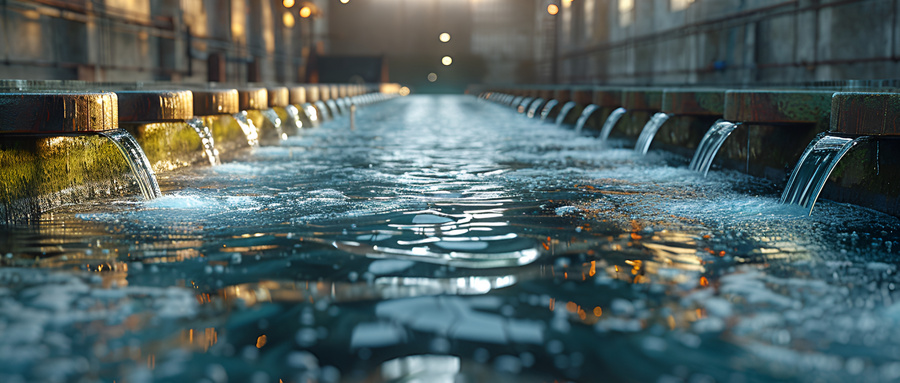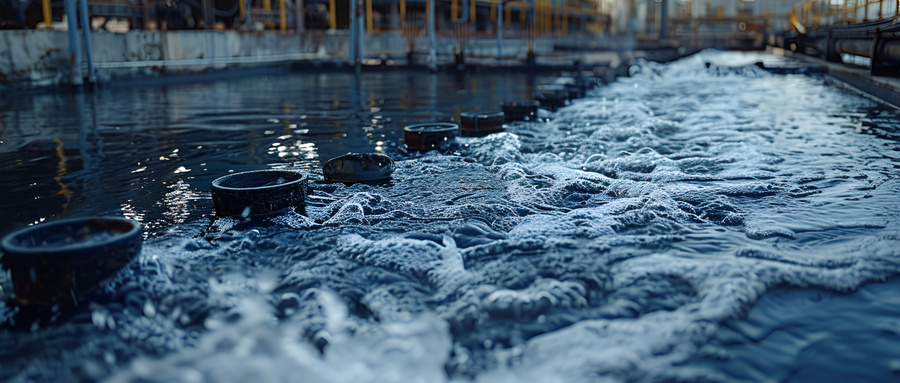
Activated Carbon in Water Treatment and Purification: A Comprehensive Guide
Explore the types, mechanisms, and diverse applications of activated carbon, highlighting its effectiveness in removing contaminants from drinking water, industrial effluents, and wastewater.
Water treatment and purification are critical processes in ensuring safe and clean water for consumption, industrial use, and environmental protection. Among the various methods employed for water treatment, activated carbon stands out as one of the most effective and widely used filtration media. This comprehensive guide will explore the various aspects of activated carbon used for water treatment, its mechanisms, applications, and benefits, while also addressing its limitations and potential advancements.

What is Activated Carbon?
Activated carbon is a form of carbon that has been processed to create a porous structure, vastly increasing its surface area and adsorption capacity. This material is capable of removing contaminants, pollutants, and impurities from liquids and gases through physical adsorption and chemical reactions. Activated carbon can be produced from various carbon-rich materials such as coconut shells, coal, wood, and peat.
Types of Activated Carbon
Activated carbon is categorized based on its particle size and production method:
Granular Activated Carbon (GAC):
GAC particles are larger, ranging from 0.2 to 5 mm in size. They are used in fixed-bed systems and water filters, allowing for continuous water flow. GAC is particularly effective in removing organic compounds and chlorine.
Powdered Activated Carbon (PAC):
PAC is composed of fine particles, typically less than 0.18 mm in size. It is added directly to water for rapid adsorption of contaminants. PAC is commonly used in emergency water treatment or as a pretreatment step before filtration.
Extruded Activated Carbon (EAC):
EAC is formed by combining activated carbon powder with a binder, creating cylindrical shapes. It is commonly used in industrial applications for gas and liquid filtration.
Impregnated Activated Carbon:
This type of activated carbon is infused with specific chemicals to enhance its adsorption capacity for targeted contaminants such as heavy metals or specific organic compounds.
How Activated Carbon Works in Water Treatment
Activated carbon used in water treatment leverages the principles of adsorption to eliminate contaminants. Adsorption occurs when molecules adhere to the surface of the activated carbon particles rather than being absorbed into the bulk material. The porous structure of activated carbon provides an extensive surface area where contaminants such as chlorine, volatile organic compounds (VOCs), pesticides, and heavy metals can be captured.
Adsorption Mechanisms
Physical Adsorption:
Driven by Van der Waals forces, physical adsorption is non-specific and occurs due to the high surface area of activated carbon. It effectively traps organic compounds, chlorine, and gases.
Chemical Adsorption (Chemisorption):
This process involves a chemical reaction between the activated carbon surface and the contaminant molecules. Chemisorption is more selective, targeting specific compounds like heavy metals or certain chemicals.
Applications of Activated Carbon in Water Purification
Drinking Water Treatment:
Activated carbon is widely used in residential water filters, municipal water treatment plants, and portable water purification systems. It effectively removes chlorine, organic compounds, and odors while enhancing the taste of drinking water. Additionally, it can reduce the presence of disinfection byproducts (DBPs), which are formed when chlorine reacts with organic matter.
Industrial Water Treatment:
Industries such as food and beverage, pharmaceuticals, and chemical manufacturing use activated carbon to purify process water, ensuring the removal of impurities and contaminants that could compromise product quality. For instance, in the pharmaceutical industry, activated carbon helps in removing organic solvents, pesticides, and drug residues.
Wastewater Treatment:
Activated carbon is employed in treating industrial effluents and municipal wastewater to effectively remove pollutants, heavy metals, and organic compounds before discharge into the environment. It is especially effective in treating wastewater from petroleum refineries, dye manufacturing, and textile processing.
Aquarium and Fish Farming:
Activated carbon is used in aquarium filters to maintain water clarity and remove toxins that could harm aquatic life. It adsorbs dissolved organic matter, tannins, and harmful chemicals while preventing the buildup of foul odors.
Benefits of Using Activated Carbon for Water Treatment
Effective Contaminant Removal:
Activated carbon can effectively remove a wide range of contaminants, including chlorine, VOCs, pesticides, herbicides, pharmaceuticals, and industrial chemicals.
Improved Water Taste and Odor:
It reduces chlorine and other unpleasant tastes and odors, making drinking water more palatable.
Cost-Effective and Efficient:
Activated carbon is relatively inexpensive, readily available, and capable of providing high contaminant removal efficiency without the need for complex processes.
Environmentally Friendly:
Activated carbon can be regenerated and reused multiple times, reducing waste and minimizing environmental impact.

Limitations of Activated Carbon in Water Treatment
Saturation and Breakthrough:
Over time, the adsorption capacity of activated carbon decreases as it becomes saturated with contaminants. Regular replacement or regeneration is necessary to maintain optimal performance.
Selective Adsorption:
While activated carbon effectively removes many organic compounds, it is less effective against certain inorganic contaminants like nitrates, fluoride, and some heavy metals.
Maintenance Requirements:
The performance of activated carbon filters depends on proper maintenance and timely replacement of spent carbon to avoid recontamination of treated water.
Advancements in Activated Carbon Technology
Recent advancements in activated carbon technology focus on increasing adsorption capacity, enhancing regeneration methods, and integrating nanotechnology to target specific contaminants more effectively. Notable developments include:
- Nano-Activated Carbon: Ultra-fine particles with significantly increased surface area, allowing for higher adsorption capacity.
- Modified Activated Carbon: Impregnated with chemical agents to target specific contaminants like arsenic, mercury, or certain pharmaceutical compounds.
- Biochar-Based Activated Carbon: Produced from agricultural waste, biochar is a cost-effective and sustainable alternative to conventional activated carbon.
Conclusion
Activated carbon remains a crucial component in water treatment and purification processes. Its extensive surface area, high adsorption capacity, and versatility make it indispensable in removing contaminants from drinking water, industrial effluents, and wastewater. While it is not without limitations, ongoing advancements in activated carbon technology continue to enhance its effectiveness, sustainability, and cost-efficiency, ensuring its continued relevance in water treatment applications.




